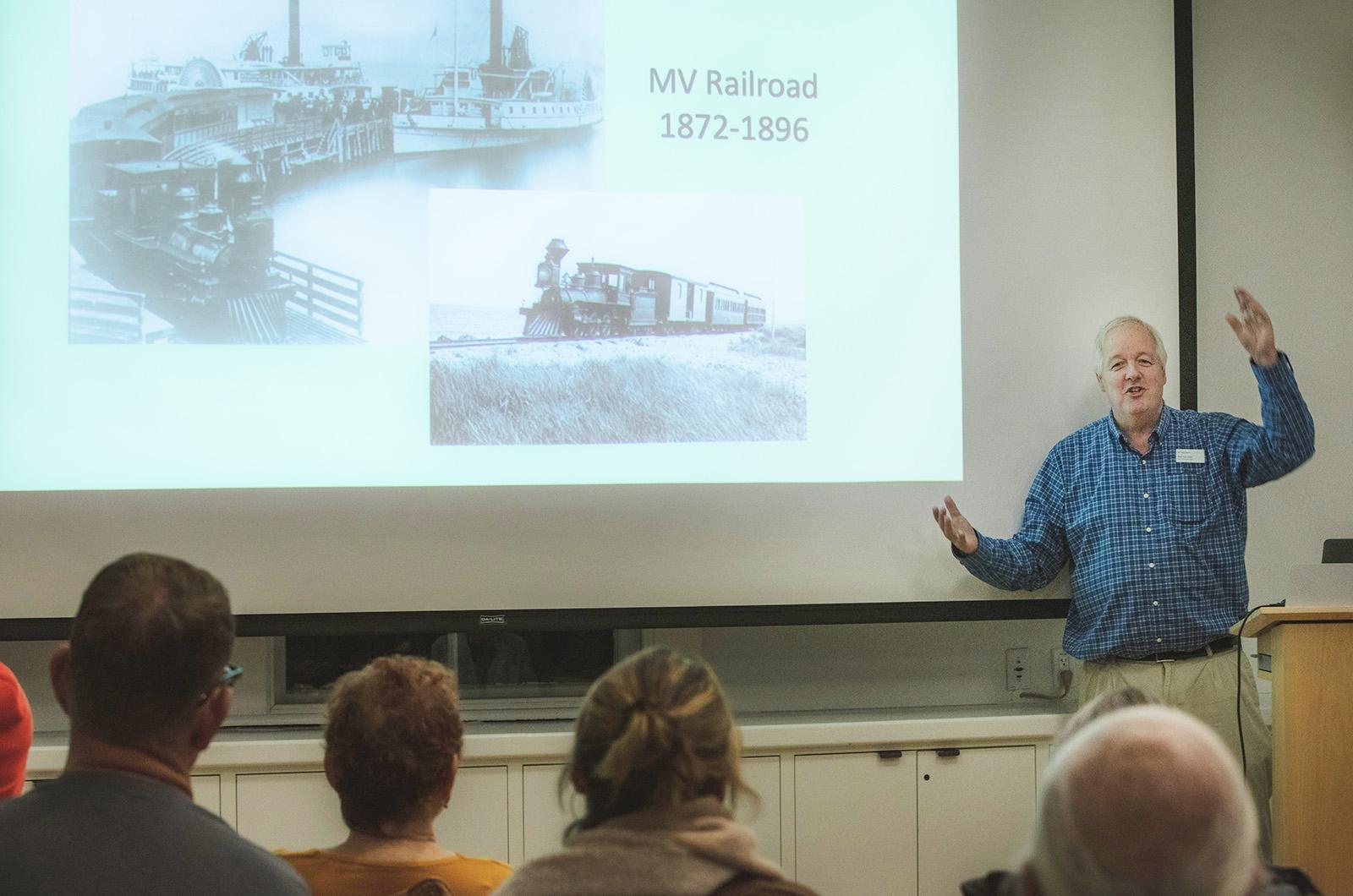In a talk Tuesday night called Phantom Neighborhoods: Failed Real Estate Developments on Martha’s Vineyard, historian Bow Van Riper of the Martha's Vineyard Museum took his audience back to the Island’s early years as a summer destination.
The 1866 resort development known as Oak Bluffs, which included Ocean Park and ultimately gave its name to the whole town, spurred a host of similar projects, Mr. Van Riper said.
“It was the first great real estate success story on Martha’s Vineyard,” he told about 30 listeners who turned out for his talk.
“And thus Oak Bluffs begat Vineyard Highlands, Bellevue Heights, Lagoon Heights, Ocean Heights [and] Oklahoma,” Mr. Van Riper said, naming some of the down-Island neighborhoods that were launched in the late-19th century.
Other developments, he said, went nowhere, or flamed out after a few years of courting buyers who were reluctant to become summer-resort pioneers on Chappaquiddick or at Katama, where speculators laid out hundreds of small building lots with parks, ponds and steamboat docks for arrivals.
“Turns out nobody wanted to build their summer place miles from nowhere,” Mr. Van Riper said.
The Katama-By-The-Sea subdivision even had its own narrow-gauge railroad directly from the Oak Bluffs steamboat wharf, carrying visitors right off the ferry on a nine-mile scenic ride to South Beach. Designed by Robert Morris Copeland, who also laid out the Oak Bluffs resort, the development boasted a hotel and pavilion to entertain prospective buyers with clambakes, concerts and overnight stays while they toured the property, Mr. Van Riper said.
“Katama By-The-Sea had everything going for it in 1872,” he said.
Even as winter storms ruined its railway tracks year after year, forcing costly repairs before every 10-week season, Katama-By-The-Sea hung on until 1896 — but never prospered, he said.
“They’d sold [fewer] than 10 lots out of the hundreds on that map,” Mr. Van Riper said.
Other developments failed more rapidly following the international financial crisis known as the Panic of 1873, which led to America’s first great depression at a time when federal deposit insurance had yet to be introduced.
“It bankrupted many people,” Mr. Van Riper said.
One Island neighborhood that might look very different today were it not for the 1873 financial crisis is Hines Point, then known as Cedar Neck, whose owner wound up selling lots to friends and family instead of completing a densely-planned subdivision.
“Hines Point is probably better for it,” Mr. Van Riper said.
Chappaquiddick-By-The-Sea, another 1872 development that went nowhere, would have created a dense neighborhood at Wasque, he said. Had it been built, Mr. Van Riper said as he displayed a map showing the original plans atop the 2015 shoreline, close to 40 per cent of Chappaquiddick-By-The-Sea would have been lost to erosion years ago.
Large-scale development on the Island slowed, he said, as the 20th century brought two global conflicts with another, greater Depression in between.
“The steam went out of big, uniform real estate developments on the Island until the great population spike of the late 1960s and early 1970s,” Mr. Van Riper said.
Meanwhile, he said, attitudes toward land use and preservation were changing and, in 1974, the Martha’s Vineyard Commission was established by the state legislature to keep developments from overwhelming the Island.
That authority was tested and upheld by the Supreme Judicial Court in 1978 after a yearslong court battle over the Waterview Farm development, which would have placed 857 half-acre building sites in the area of what is now the Farm Neck Golf Course in Oak Bluffs, Mr. Van Riper said.
The Oak Bluffs planning board approved the developers’ proposal in 1974, but the commission denied it, sparking the legal case that ultimately doomed the project.
Speculators and landowners continue to propose new neighborhoods on the Vineyard, and while none approach the scale of Waterview Farm, they are all descended from the wave of developments that began in the 1860s, Mr. Van Riper said.
“Turning farmers’ fields and woodlands into densely-packed housing is not something that was invented in our lifetimes,” he said.







Comments
Comment policy »